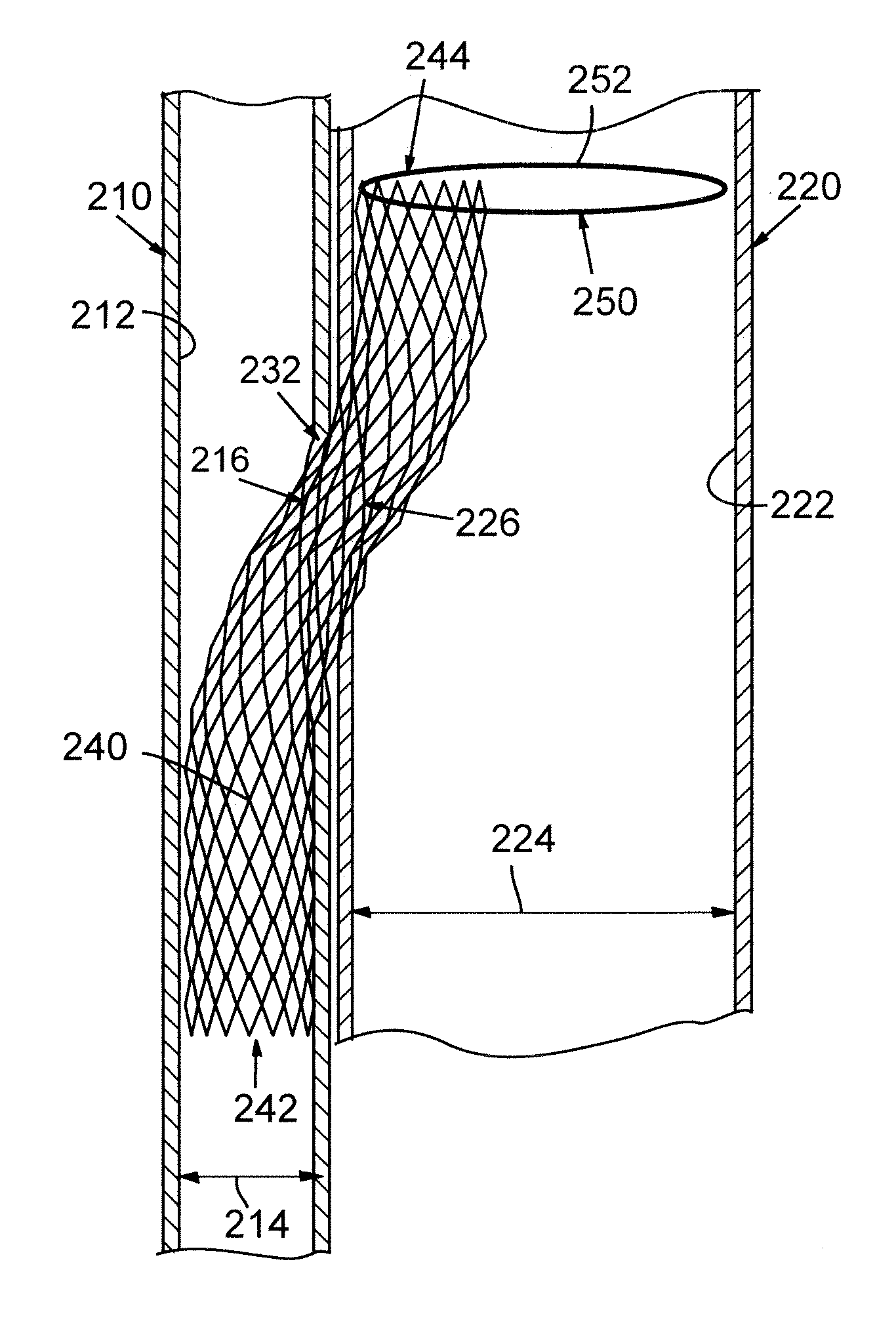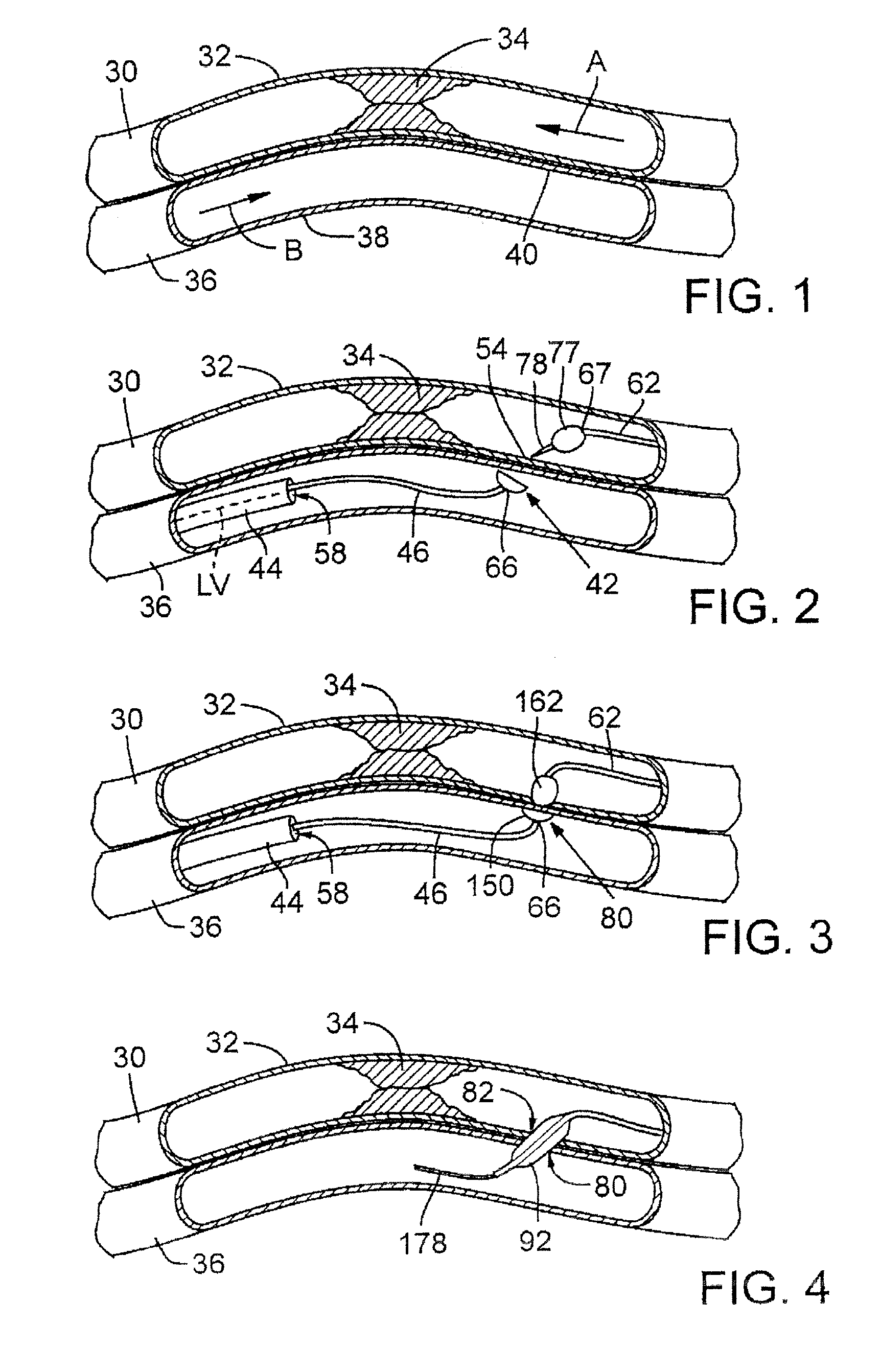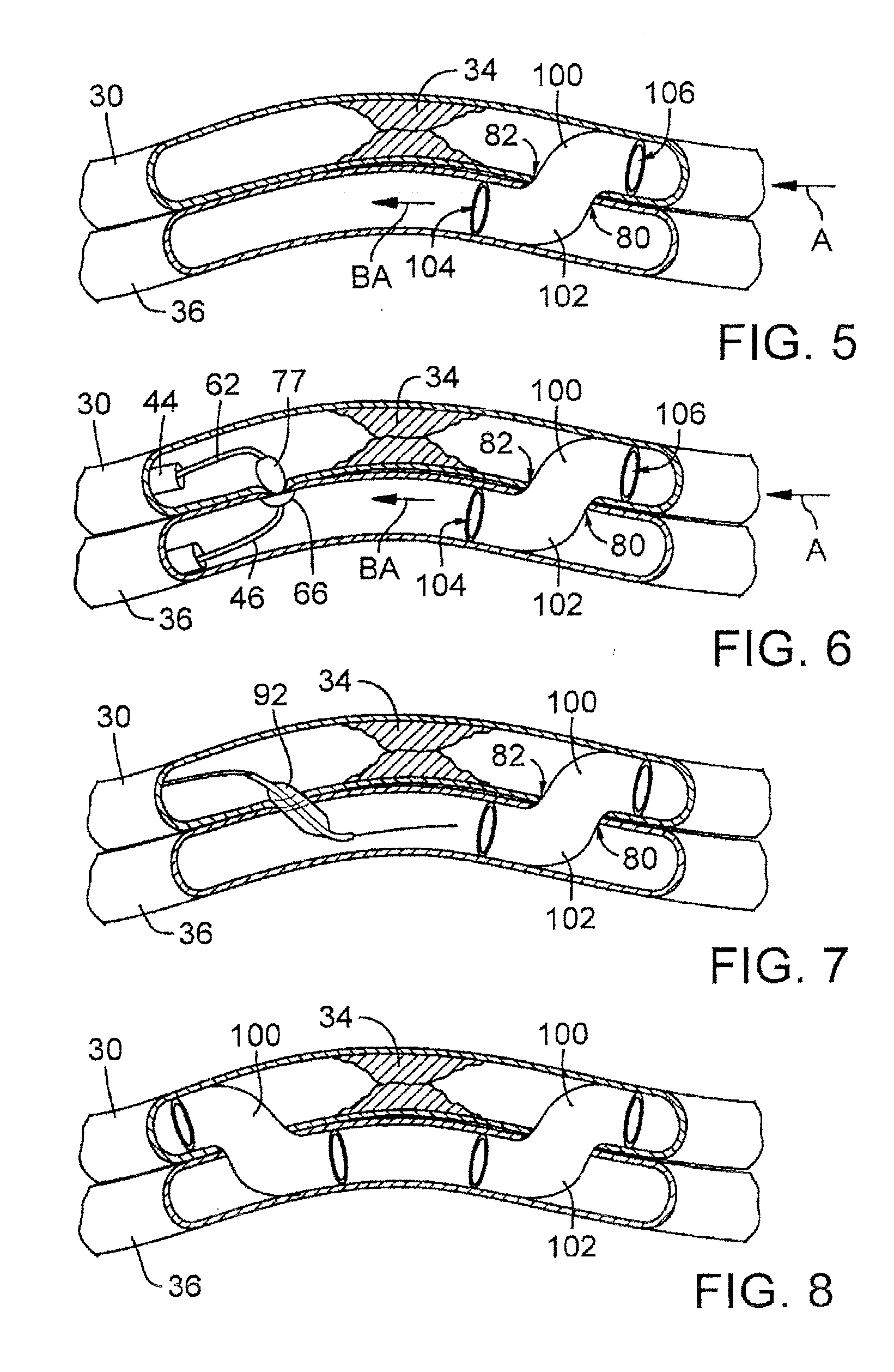Catheter system with stent device for connecting adjacent blood vessels
a catheter system and blood vessel technology, applied in blood vessels, medical science, surgery, etc., can solve the problems of affecting the stability of the vein portion of the catheter that extends into the vein, affecting the ability of the physician to insert instruments in the later procedure, and affecting the effect of radial strength
- Summary
- Abstract
- Description
- Claims
- Application Information
AI Technical Summary
Benefits of technology
Problems solved by technology
Method used
Image
Examples
Embodiment Construction
[0026] As shown in FIG. 1, an artery 30, formed by an artery wall 32, has a blood flow, indicated by arrow A, that is partially or totally blocked by an obstruction or occlusion 34, typically formed by plaque. A vein 36 roughly similar in dimension to artery 30 lies alongside and generally parallel to artery 30. Vein 36, formed by a vein wall 38, includes, in the area proximal to occlusion 34, a portion 40 in close proximity to artery 30 that the physician has selected as a venous site for creating a fistula between artery 30 and vein 36. The normal blood flow through vein 36 would be in the direction indicated by arrow B.
[0027] An embodiment of the disclosed system, indicated generally at 42 in FIG. 2, is a catheter apparatus that includes a first catheter 62 and a second catheter 44. In FIG. 2, the first catheter is in the artery and the second catheter is in the vein, but this can be reversed. Similarly, the first catheter in the artery is shown upstream from occlusion 34, but t...
PUM
 Login to View More
Login to View More Abstract
Description
Claims
Application Information
 Login to View More
Login to View More - R&D
- Intellectual Property
- Life Sciences
- Materials
- Tech Scout
- Unparalleled Data Quality
- Higher Quality Content
- 60% Fewer Hallucinations
Browse by: Latest US Patents, China's latest patents, Technical Efficacy Thesaurus, Application Domain, Technology Topic, Popular Technical Reports.
© 2025 PatSnap. All rights reserved.Legal|Privacy policy|Modern Slavery Act Transparency Statement|Sitemap|About US| Contact US: help@patsnap.com



